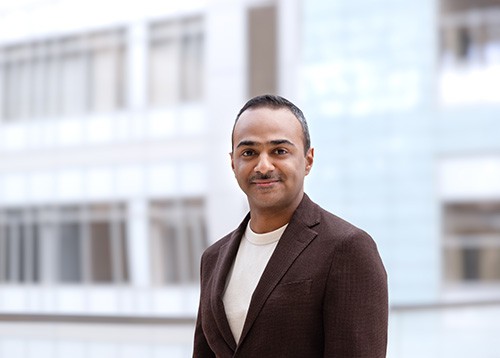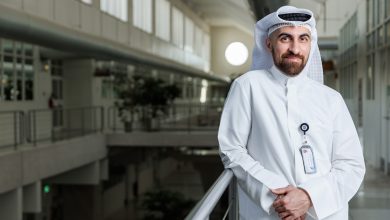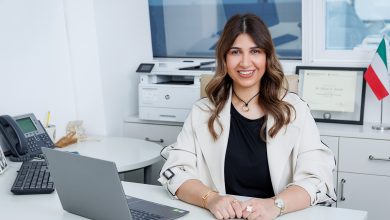Mapping the Future: Uncovering Patterns and Trends in the Socioeconomic Landscape of Kuwait
The latest research into the economic and social landscape of Kuwait could help inform sustainable models of urban development in the future

Many countries are looking towards sustainable urban development, but one barrier to implementation is defining the patterns of land use that help inform future planning. Kuwait tends to be characterized by a heavy reliance on private cars, low-density urban sprawl, and limited use of public spaces. Another distinguishing factor of planning decisions in Kuwait is the spatial segregation of the population.
While there have been studies into this type of spatial segregation in Kuwait in the past, these have mostly dealt with qualitative data. A new project, completed with support from the Kuwait Foundation for the Advancement of Sciences (KFAS), aims to uncover the kind of quantitative data that is needed to inform Kuwaiti decision-makers as they consider the future of urban planning.
The project is led by Dhari Alrasheed from Kuwait University and Nuno F. da Cruz from the London School of Economics and Political Science (LSE). The project falls under the Kuwait Academic Collaborations Programme, run by the LSE Middle East Centre, with funds provided by KFAS.
Alrasheed is an Assistant Professor of Economics in the College of Business Administration at Kuwait University. His research activity spans the fields of urban economics and applied econometrics. He holds a doctorate and master’s in economics from the University of California, Irvine, and a bachelor’s in mechanical engineering from Oregon State University. Since joining Kuwait University in 2018, he has taught introductory and advanced courses in the economics undergraduate and master programs.
The goal of this specific project was for da Cruz, a researcher of urban governance, and Alrasheed to join forces and complement each other’s expertise and knowledge. “We’ve used multiple measures of segregation that are quantitative, and it seems like we are the first in Kuwait to implement them, and potentially in the Gulf,” Alrasheed said. “So we hope that complements the existing body of literature.”
The initial aim of the project was to gather data to uncover the nature of spatial segregation in Kuwait, which could then also be used to discover more about spatial inequalities. “The spatial segregation data turned out to be much bigger than we thought,” said Alrasheed. As a result, the aim is to focus on spatial inequalities as a project for the future. “It felt more natural to first understand the nature of segregation before we are able to understand the spatial inequalities that potentially result from the segregation,” said Alrasheed.
The project started by using data from the census, which was collected in 2011. “A lot has happened since then,” said Alrasheed. While the latest census was completed during the first half of 2023, the spatial data wasn’t yet published. So, the project team used another dataset from the Public Authority for Civil Information in Kuwait. Importantly, this data has been collected over the last 20 years, at five-year intervals. “Because of that, we were able to quantify segregation and how it changed over time, rather than just one snapshot,” said Alrasheed.
The biggest challenge of the project was getting the raw data prepared before it could be interpreted. Initially, Alrasheed intended to hire someone to prepare the data but due to lockdowns during the COVID-19 pandemic, this wasn’t possible. To get around this problem Alrasheed ended up collecting most of the data himself, plus learning the new software required to prepare the data.
The pandemic also impacted the project, which started towards the end of 2019, in other ways. Due to travel restrictions, da Cruz wasn’t able to travel to Kuwait to conduct fieldwork as planned. “We ended up hiring local lead researchers who have done a phenomenal job for us, but it’s not the same as the principal investigator actually doing the work himself,” said Alrasheed.
Even 20 years ago, Kuwait was classed as having extreme segregation. However, the project uncovered that since then, segregation has increased. “While this can, in part, be explained by transient workers self-segregating, it’s also due to public policies,” said Alrasheed. Two of the most common measures of segregation are the dissimilarity index and the isolation index. These measure how the population is distributed across space, and how this population experiences any segregation. But this project also looked at another three measures of segregation, to uncover far more detail than previous research.
“We combine these five indices of segregation, instead of just looking at one of them, to paint a complete picture of the segregation situation in Kuwait,” said Alrasheed. “And the conclusion is undeniable, that Kuwait is considered extremely segregated, probably due to a combination of policies and also behavioral choices.”
The full report is currently under review and expected to be published towards the end of 2023. As the project uncovered so much data, the next stage is to look at the effects of this spatial segregation in more detail. Alrasheed hopes to uncover whether the uneven distribution of the population correlates with an uneven distribution of resources.
أنشأ المشروع قاعدة بيانات كبيرة يخطط الرشيد أيضًا لإتاحتها لمشاريع أخرى. وقال: “سيكون ذلك بمثابة تأثير غير مباشر أو فائدة أخرى ربما تتحقق بفضل هذا المشروع، من خلال إجراء مزيد من الأبحاث بتكلفة أقل بكثير”. وكان الجانب الإيجابي الآخر هو فرصة التعاون مع خبراء من تخصصات أخرى، لاسيما أن الرشيد هو أحد الاقتصاديين الحضريين القلائل في الكويت. وقال أيضًا إنه يعتبر نفسه ودا كروز من الباحثين المحظوظين لأنهما تمكنا من الحصول على تمويل من Kuwait Foundation for the Advancement of Sciences من خلال مركز الشرق الأوسط التابع لكلية لندن للاقتصاد. وأشار إلى الدور المكمل لكل من الباحثين منيرة الربيع وعبدالله الخُنيني اللذين عملا كمستشارين في المشروع. وقال “لولا مساعدتهما، لما تمكنا من إنجاز قسم كبير من العمل. عرفتهما شخصياً من قبل، لكن لم تسنح لي الفرصة للعمل معهما. … والآن أنا متحمس حقًا للعمل معهما في المستقبل”.
Even though the project took longer than anticipated to complete, Alrasheed has enjoyed the opportunity to learn more about his home country: “Being a Kuwaiti researcher educated abroad, I’ve underestimated how much there is to be known and to be learned about Kuwait and its history,” Alrasheed said. “It’s been a blessing learning about some of the history of urban development in Kuwait through this project, and the status of society and where we stand when it comes to the interaction between the Kuwaiti population and the huge non-Kuwaiti population that is an integral part of society.”
By Emma Stenhouse
Photos: Omar al sayed omar




